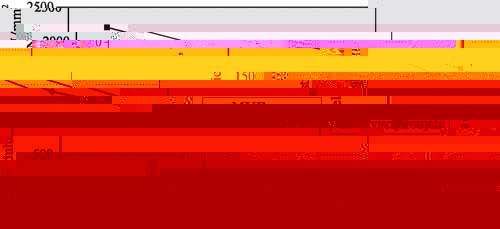Utilization of Waste Tire Rubber in Manufacture of Particleboard
Nadir Ayrilmis, Umit Buyuksari, Erkan Avci,
Istanbul University, Istanbul, TurkeyAli Nejdet Kuru, Un-Sal Danismanlik Gida Tekstil Endustriyel Urunleri San. ve Tic. Ltd Sti., Seyhan/Adana, Turkey
Introduction
In the recent years, there is a strong interest for a manufacture of products from recycled materials. The advantage of this is that recycling of materials makes a technology more economically and environmentally attractive. Waste tires are of major concern among waste materials in terms of the developing civilization. The amount of waste tires increases constantly together with the demand for tires. Their lifetime is short. Therefore, it is necessary to develop methods of waste tire recycling. Disposal of used automotive tires has caused many environmental and economic problems to the majority of countries. A policy of most countries is to encourage recycling and, in particular, the use of waste tires as construction material to prevent environmental pollution. According to European Tyre Recycling Association (ETRA) Conference 2007 in Brussels, Belgium, equivalent of 300 million or more scrap tires reach their end-of-life each year in the 27 member states of the European Union.
It is a fact that demand for wood products has been increasing with the increase of world population, which has a negative influence on sustainable utilization of forest resources. Currently, approximately 70 % of raw materials necessary for Turkish particleboard industry are supplied from Canada, Russia, and Ukraine because of decreasing availability of raw material in Turkey. Value-added wood based panels manufactured from recycled materials would be considered as an alternative solution to this problem.
The objective of this study was to investigate possibilities to produce particleboards using recycled waste tires and consequently solve serious problem of environmental pollution caused by tire industry.
Materials and Methods
Wood flakes of two types — coarse and fine flakes were used in the laboratory to produce three-layer particleboard containing tire rubber. The coarse flakes were used for the core layer of the three-layer particleboard while the fine flakes were used for the face layers of the board.
The waste tire rubber crumbs were prepared from waste tires with reinforced tendons being mechanically removed prior to grinding. The process of grinding waste tires consists of mechanical cutting and granulation. Two types of waste tire rubber crumbs, passing 80-mesh and 30-mesh screens, were received from Un-sal Waste Tire Processing Company in Adana, Turkey. The tire rubber crumbs (between 0.8 and 2.75 mm), passing 30-mesh screen, were used for core layer while the rubber crumbs (between 0.01 and 0.8 mm), passing 80-mesh screen, were used for surface layers of particleboard (Fig. 1).

Fig. 1. Two types of waste tire
rubber crumbs:
a
— the tire rubber crumbs passing
30-mesh screen for core layer;
b
— the rubber crumbs passing 80-mesh screen for surface layers
Prior to processing the rubber crumbs were dried up to moisture content between 3-4 %. The liquid melamine-urea formaldehyde (MUF) resin containing 75 % urea and 25 % melamine (based on liquid resin with 6 % solids) and the polyisocyanate (PI) resin were separately used for wood flakes and rubber crumbs.
Particleboard Manufacture
Particleboards were manufactured at a specific density of 0.65 g/cm3 with waste tire rubber crumbs contents of 10, 20, and 30 wt % based on the weight of the oven-dried raw material. For comparison of the physical and mechanical properties of the boards with waste tire rubber, the control boards were also manufactured.
The waste rubber crumbs, passing 80-mesh screen, and fine wood flakes were mixed up and placed into a rotary drum mixer. This composition was slowly mixed up with 10 wt % (based on the weight of the oven-dried raw material) MUF adhesive. The same procedure was applied to mix up the coarse wood flakes and waste rubber crumbs, passing 30-mesh screen, to prepare core layer of particleboard. Polyisocyanate resin was added to the mixture of wood flakes and the tire rubber crumbs similarly to the MUF resin for the first board type. The NH4Cl solution (20 %) was added in the quantity of 1 % based on solid weight of the MUF resin. The ratio of the face thickness to the total thickness of a board known as the shelling ratio was 0.30 for all specimens. The mat was pre-pressed at 0.5 N/mm2 for 30 s and then pressed in a laboratory hot press at 180 °C and 2.5 N/mm2 for 10 min to 10 mm of the target thickness.
A total of 16 particleboards (8 boards made using MUF resin and 8 boards made using polyisocyanate resin) were produced for the experiments. It were produced 8 boards — two of each of four treatment levels (control and 3 levels of tire rubber to wood flakes mixing ratios: 10/90, 20/80, 30/70).
All physical and mechanical tests on the experimental particleboards were conducted in accordance with corresponding European Norms (EN). It were performed the following tests: thickness swelling (TS) (EN 317, 1993), density (EN 323, 1993), modulus of rupture (MOR) (EN 310, 1993), modulus of elasticity (MOE) (EN 310, 1993) and internal bond (IB) (EN 319, 1993).
Results and Discussion
Table 1 summarizes the average TS, MOR, and MOE results of the control boards and particleboards with waste tire rubber.
Table 1
Some physical and mechanical properties of particleboards with waste tire rubber



